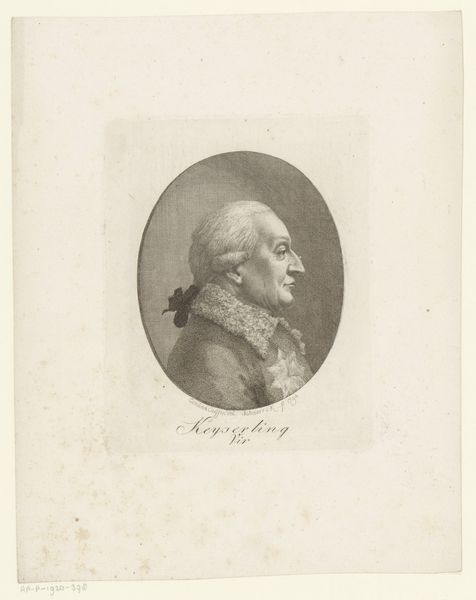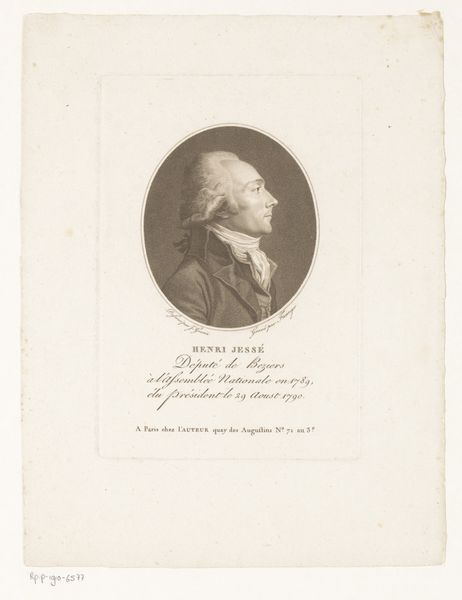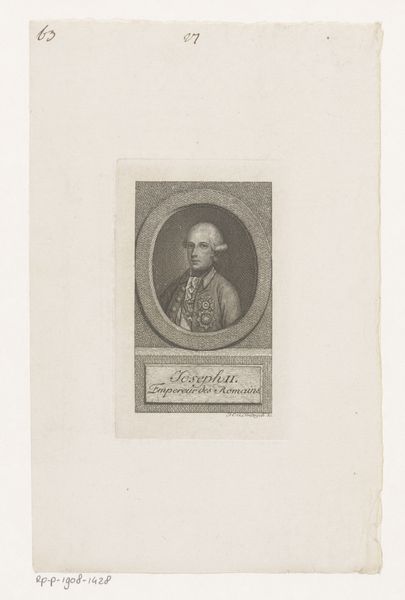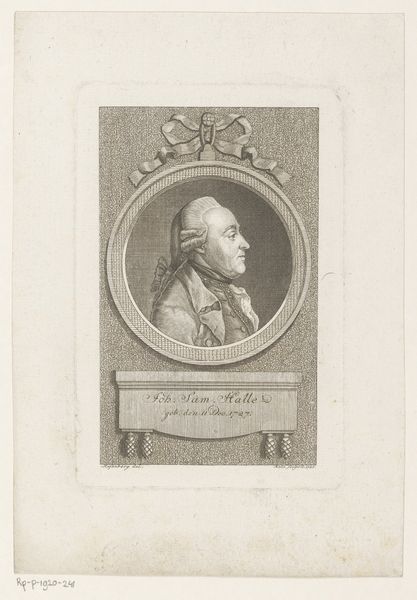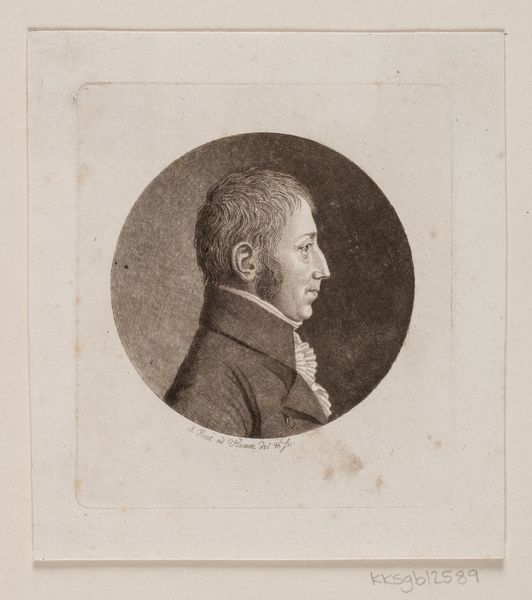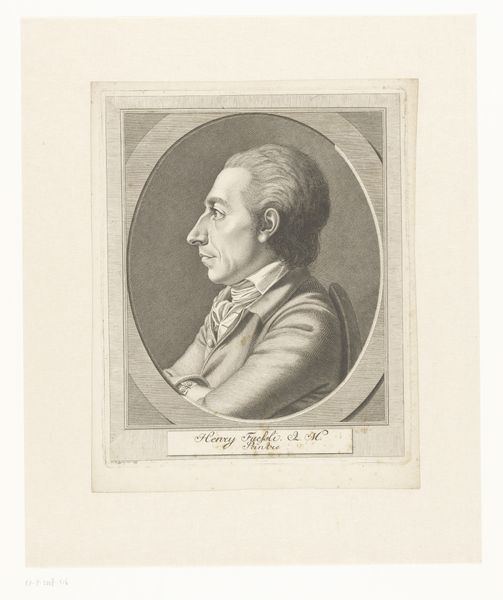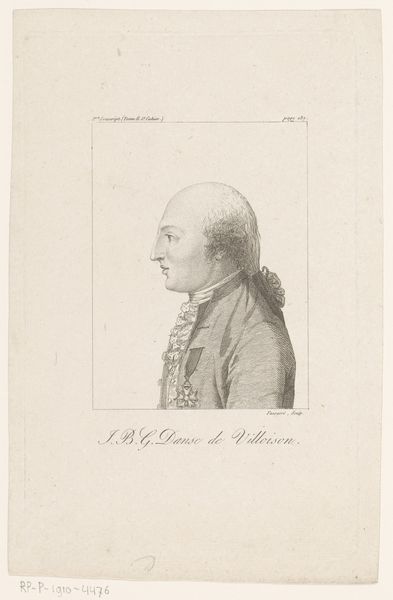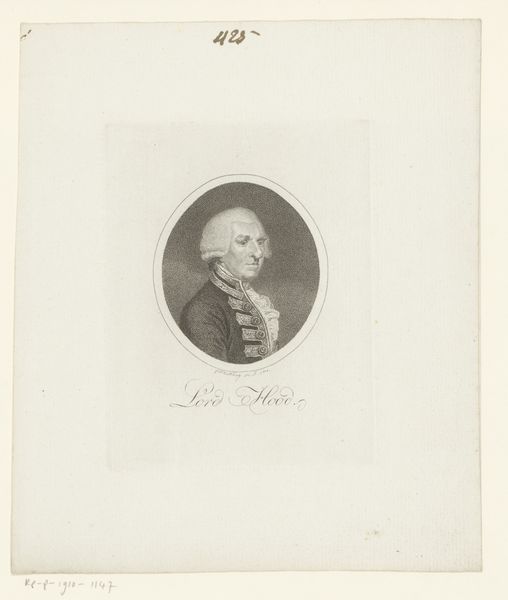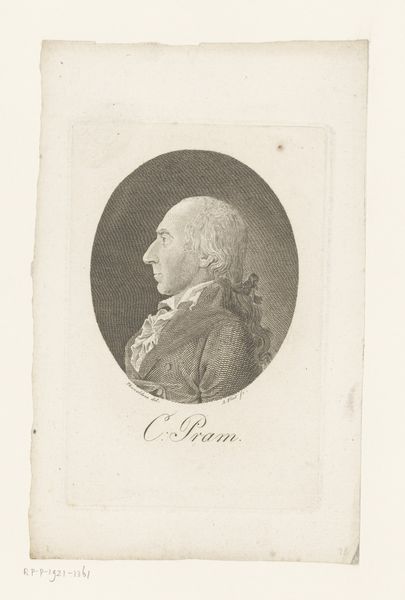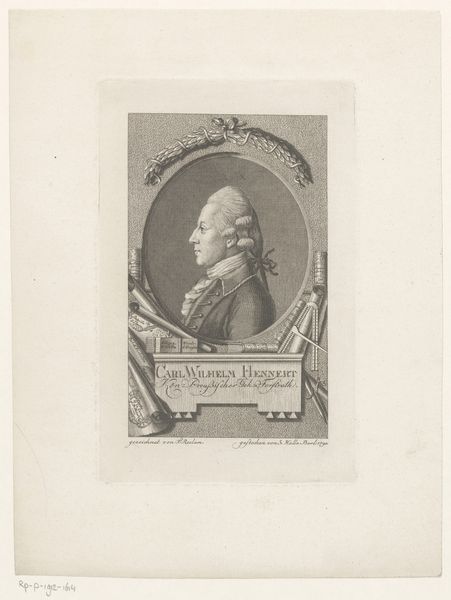
aquatint, print, etching, engraving
#
portrait
#
aquatint
# print
#
etching
#
history-painting
#
engraving
Dimensions: 5 1/8 x 4 3/8 in. (13.02 x 11.11 cm) (image)7 x 5 13/16 in. (17.78 x 14.76 cm) (plate)11 9/16 x 8 15/16 in. (29.37 x 22.7 cm) (sheet)22 x 18 1/8 in. (55.88 x 46.04 cm) (mat)
Copyright: Public Domain
Editor: Here we have an 18th-century print titled "F. Coates," using engraving, etching, and aquatint techniques. It’s a profile portrait of a painter. I'm struck by how meticulously rendered it is, considering it's not a painting. What is your perspective on this piece? Curator: What interests me is how this print embodies the democratization of art during the 18th century. These printmaking processes - engraving, etching, and aquatint - allowed for wider distribution and consumption of imagery than painting alone ever could. The labour involved in each stage—the initial design, the etching or engraving of the plate, the printing process itself—all speak to a new mode of art production where reproducibility was valued. Editor: That’s a great point. I hadn't considered the production aspect and broader accessibility it created. Curator: Consider, too, how the rise of printmaking coincides with an expanding middle class and increased consumerism. The desire to own images, to possess a likeness, fueled the demand for affordable art. The materiality of the print, the paper itself, became a site of value and exchange. It's also interesting to examine the etcher’s labor - what materials did he have access to and what workshops or other means were available? Editor: So, beyond just being a portrait of an artist, it's really an artifact of its time, reflecting shifts in art production and consumption. Curator: Exactly. It invites us to question the traditional hierarchy of art forms. Was a meticulously crafted print less 'artistic' than a painting simply because it was more readily produced and available? Thinking materially, we also confront questions surrounding value and social mobility that it made possible. Editor: I see it in a completely different way now, less about the image itself and more about its existence as a material object and its context. Thanks for sharing that! Curator: My pleasure. It's through considering materiality and social context that we gain a fuller understanding.
Comments
No comments
Be the first to comment and join the conversation on the ultimate creative platform.
